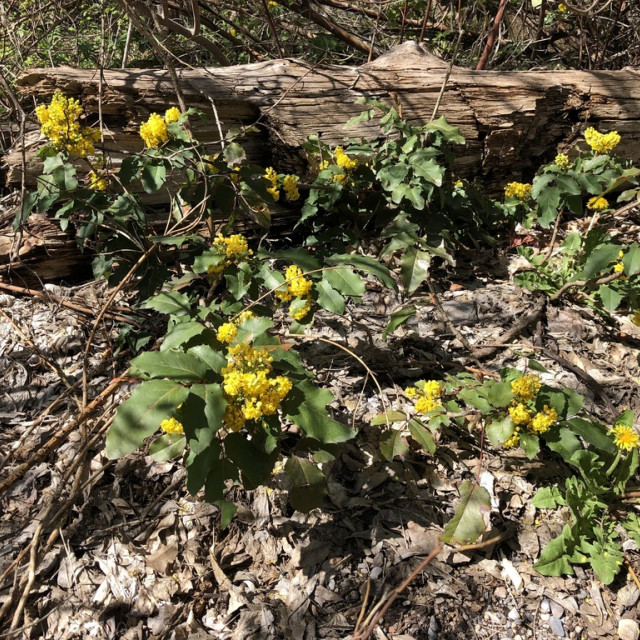COMMON NAME
Creeping mahonia
SCIENTIFIC NAME
Berberis repens
ALSO KNOWN AS
Mahonia repens, Creeping Oregon grape
Plant family
Barberry (Berberidaceae)
Plant group
Broadleaf Evergreens
Creeping mahonia (also known as creeping Oregon grape) is an evergreen shrub with shiny holly-like leaves, typically growing just 1-3' tall.
253 reports
112+
OBSERVERS
253+
OBSERVATIONS
Identification hints
Creeping mahonia is adapted to habitats that have regular wildfires. It regenerates after a fire when dormant buds sprout from the surface of the underground rhizomes.
Did you know?
The scientific name of creeping mahonia and Oregon grape was changed from Mahonia repens to Berberis repens. The genus "Mahonia" is no longer in common usage.
DISTRIBUTION IN TH U.S.
Arizona
,
California
,
Colorado
,
Delaware
,
Idaho
,
Indiana
,
Minnesota
,
Montana
,
North Dakota
,
Nebraska
,
New Mexico
,
Nevada
,
Oregon
,
Pennsylvania
,
South Dakota
,
Texas
,
Utah
,
Washington
,
Wyoming
HABITAT
Creeping mahonia favors hills, dry slopes, and canyons in coniferous forest, oak woodland, and chaparral, often in partial shade. It is found throughout the western United States and also in scattered locations in the east.
ATTRIBUTES
Leaves
Leaves of creeping mahonia are up to one foot long, and they are composed of 5-7 leaflets (compound leaves). The leaflets have no leaf stalks (sessile), they have spiny toothed leaf margins, and are somewhat shiny above and below. The foliage often turns reddish or purplish in the fall.
Flowers
Yellow flowers are borne in dense, 2-3" long clusters.
Fruits
Ripe fruits are dark dusty blue berries that resemble grapes
Bloom Time
Blooms in early springtime.
See Menu
- 2021 Chicago Botanic Garden. All Rights Reserved.
-
Creative Commons
BY-NC-SA 4.0 - Terms of Use
- Privacy Policy
- Data Sharing and Citation Policies
- 2021 Chicago Botanic Garden. All Rights Reserved.



